Flyssa Sword: The Traditional Weapon of the Kabyles
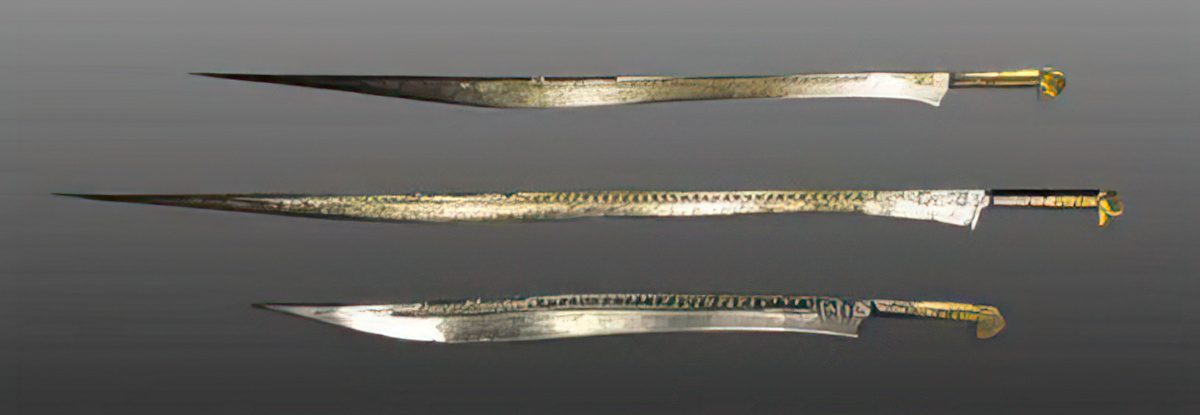
What’s in this article?
Most recognized for its animal head pommel, the flyssa sword is the distinctive weapon of the Kabyles of Algeria and Morocco. It was designed to break chainmail armor that was worn in parts of Africa until the 19th century. It is also notable for its decoratively incised blade, featuring talismanic geometric designs.
Let’s explore the history of the flyssa sword, its unique characteristics, and its significance to the Kabyle people.
Characteristics of the Flyssa Sword
The flyssa sword has a distinctive blade shape, a guardless hilt, and an animal-headed pommel. However, the weapon widely varies in length and is sometimes classed as a sword or dagger.
Here are the unique characteristics of the flyssa sword:
Origin and Manufacture
Although many North African swords were fitted with European blades, the flyssa blade is locally manufactured. It was created by the skilled weapon smiths and armorers of the Kabyle people in Algeria, particularly the At Zouaou group of the Iflissen tribe.
Blade Appearance

The flyssa has a straight, single-edged blade and a long point. The blade is broad near the hilt, and the cutting edge curves inward, then widens again, finally narrowing to a long point. Its cutting edge was efficient for slashing, but it’s tapering point was also suitable for stabbing.
Blade Decoration
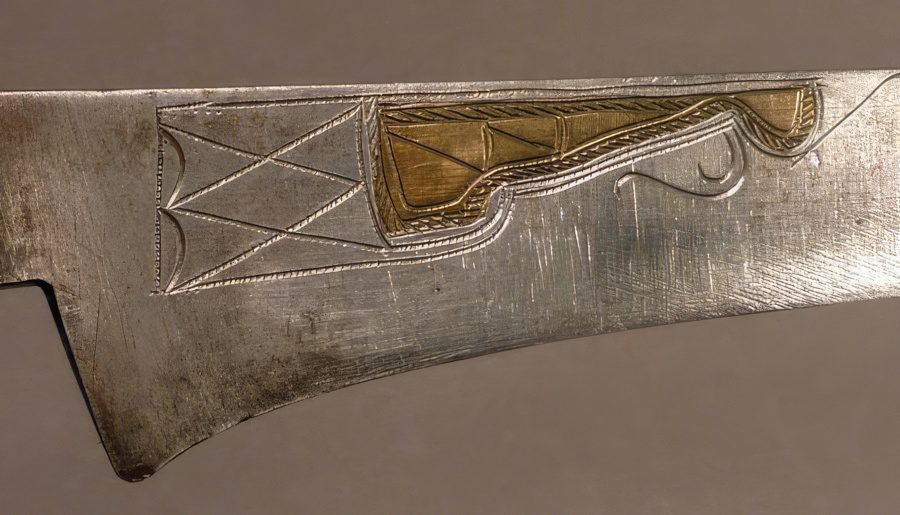
The flyssa sword features engraving and brass inlay decorations on the blade surface and spine. They are usually scrollwork, geometric, and zigzag motifs. Some believe these decorations serve as an amulet.
Others suggest a particular decoration was designed for an individual or a group due to its resemblance to those of the Berber ceramics and Kabyle rugs, which are likely symbols of tribes and clans.
Size and Length
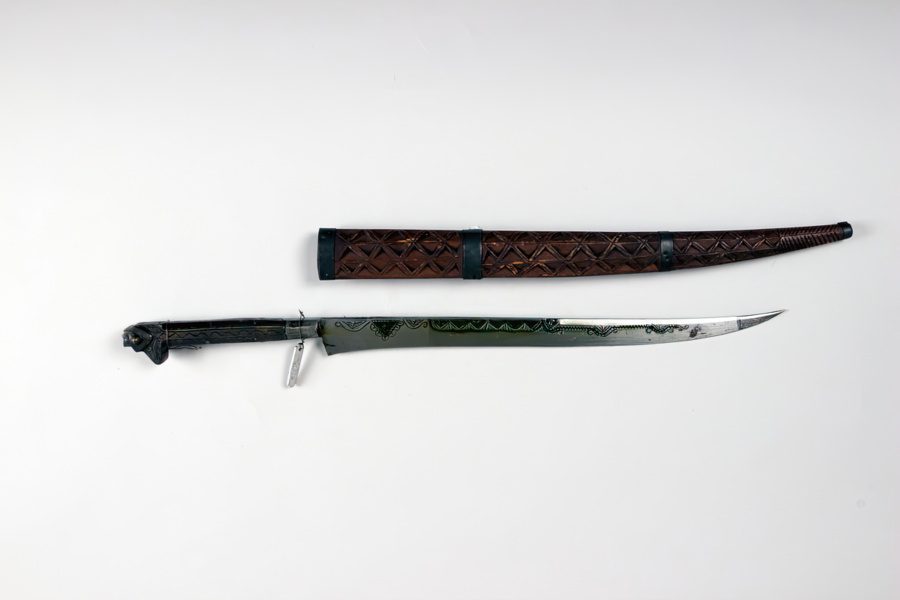
The flyssa greatly varies in length, from 12 to 39 inches long (30 to 99 centimeters). Its longer varieties are considered swords, while the shorter types are regarded as short swords, daggers, or knives. The longer types, over 95 centimeters, weigh about 2 ½ lbs. (1 kg).
Flyssa swords usually have an overall length of about 39 inches (99 centimeters), with their blade about 34 inches (around 86 centimeters) long. Daggers typically have an overall length of approximately 17 inches (about 43 centimeters) and a blade length of 13 inches (33 centimeters).
Sword Mounting

The hilt of the flyssa sword has no guard, and the pommel always features a stylized animal head.
Hilt
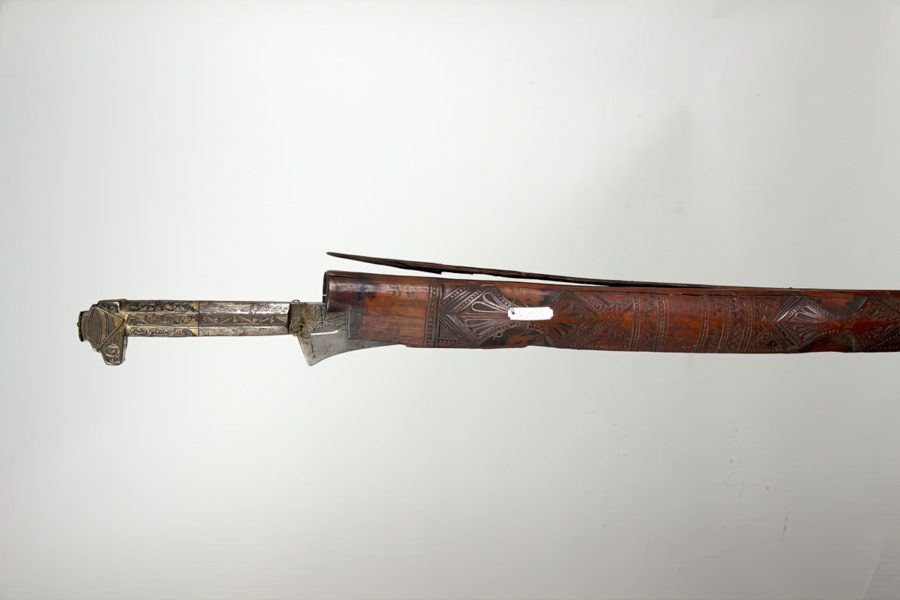
Hilt material varies from brass to steel and wood and usually has an octagonal grip. The pommel takes the form of an animal’s head, usually described as a horse’s, camel’s, or bird’s, with a square muzzle and triangular ears. Some dagger-sized flyssas also have engraved brass or wooden grips inlaid with brass and horn.
Scabbard
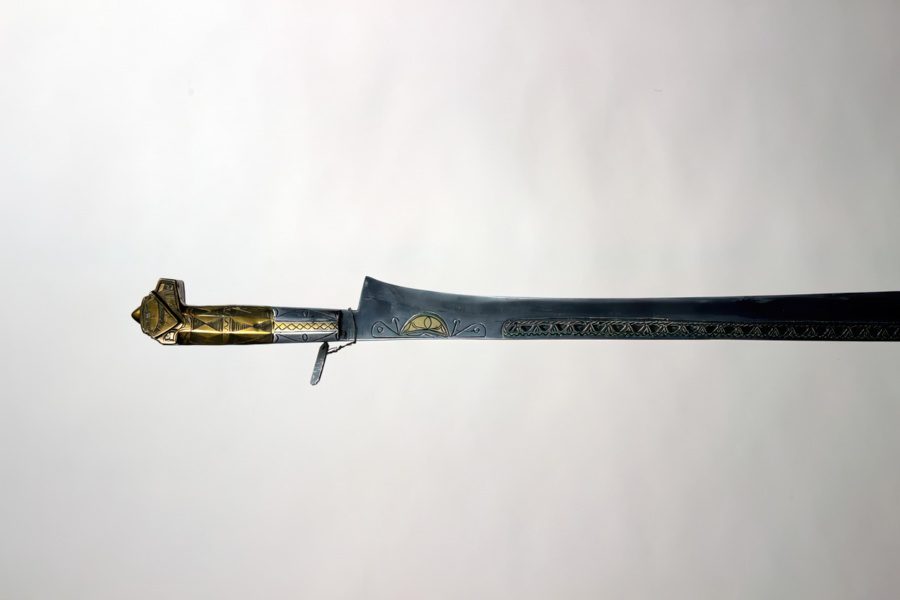
The flyssa sword has a wooden scabbard constructed from two pieces of wood held together with brass bands. Some also feature sling hoops and a pocket for a small knife. Wooden scabbards are often elaborately carved with geometric and floral designs and sometimes inlaid with silver.
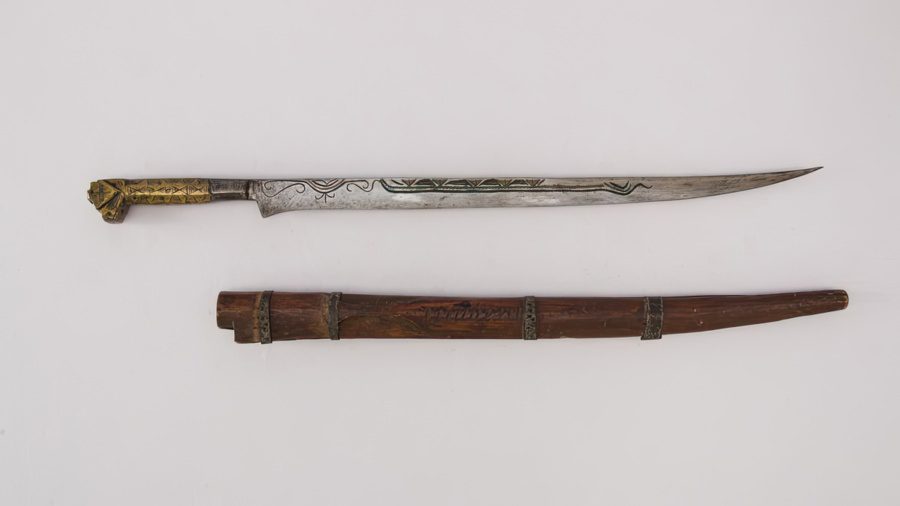
Some sheaths for dagger-sized flyssa were plain and simple, while others had elaborate glass decorations that matched the hilt.
History of the Flyssa Sword
African blades were more diverse in shapes and purposes than those in Asia and the West. The flyssa sword, from its blade shape to its animal-headed pommel, reveals much about its historical background. There have been several suggestions regarding its origin due to its resemblance to ancient blades.
The flyssa is the traditional sword of the Kabyles.
The Kabyles are an ethnic group from the Kabylie region in northern Algeria, between Skikda and Algiers. They are among the sub-groups of the Berbers, the indigenous people of North Africa. Most of them are Muslim, though they kept some of their pre-Islamic religious traditions. The flyssa sword is most associated with the Kabyles, who reside in Algeria and Morocco.
The name flyssa comes from the Iflissen Lebhar tribe.
The Iflissen Lebhar tribe is one of the major tribes of the Kabyles. The At Zouaou, the easternmost group of the tribe, has skilled armorers and weapon smiths who created the flyssa sword. The acquisition of a flyssa was a rite of passage among the young men of the Kabyles. The weapon’s name may also have been derived from Iflissen, a town in Northern Algeria.
Some believe the flyssa blade was inspired by the Greek makhaira.

Also known as kopis, the makhaira has a recurved blade suited for cutting and thrusting. Greek historian Xenophon, who lived before Alexander the Great, recommended the cavalry use of the makhaira.
Some historians have argued that the unusual concave section of the flyssa blade was copied from the ancient Greek sword, as the latter would have the flyssa blade when straightened. The Carthaginians, who were originally Phoenicians, likely brought it to Algeria.
The flyssa sword had its origins beyond the east.
Other suggestions about the historical background of the flyssa sword have been made due to its resemblance to various weapons. The flyssa sword has a hilt similar to the shamshir, which spread from Persia to other parts of the Islamic world.
Some also associate the Algerian sword with the Turkish yataghan, a sword with a double-curved blade and without a handguard, which was widespread in Turkey and the Balkans during the 18th and 19th centuries.
All the decorations of the flyssa sword are thought to have magical power.
Some scholars have argued that the large eyes on the animal-head pommels on the flyssa sword protected the swordsman against the evil eye. For Islamic North Africans and Berbers alike, the evil eye is widely believed to be a curse caused by a jealous glance of another person. It brings misfortune, disaster, and death to the person it directs.
The evil eye charm is thought to deflect the effects of the evil eye and is applied to many objects in the region, including swords. The triangular motifs on the sword blades are also believed to represent fibulae—pins or brooches that hold garments—that could also pierce the evil eye. Some also claim that zigzag motifs symbolize snakes that drive the evil eye away.




